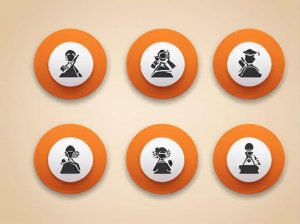Behavioral objectives play a crucial role in education, training, and professional development. They define clear expectations for learners, helping instructors assess progress effectively. Explicitly stating behavioral objectives ensures clarity, accountability, and measurable outcomes.
This content explores the importance of explicitly stating behavioral objectives, their components, benefits, and best practices for writing them.
1. What Are Behavioral Objectives?
A. Definition
Behavioral objectives describe specific, measurable actions that learners should be able to perform after instruction. They focus on observable behaviors, ensuring that learning outcomes are clear and assessable.
B. Key Characteristics
- Specific Clearly defines what the learner should do.
- Measurable Can be assessed through observation or testing.
- Achievable Realistic and within the learner’s capability.
- Relevant Aligned with learning goals.
- Time-bound Specifies when the objective should be met.
2. Importance of Explicitly Stating Behavioral Objectives
A. Provides Clarity and Direction
When behavioral objectives are explicitly stated, learners understand expectations from the beginning. This reduces confusion and keeps them focused on achieving specific goals.
B. Ensures Measurable Outcomes
Explicit objectives allow educators and trainers to evaluate progress objectively. They provide a benchmark for assessing whether learners have met the desired competency.
C. Enhances Lesson Planning
Instructors can design lessons that align with learning objectives, ensuring that activities and assessments support the intended outcomes.
D. Improves Accountability
Clearly stated objectives hold both learners and instructors accountable. Learners know what they need to achieve, while instructors can track and adjust teaching methods accordingly.
E. Supports Effective Assessment
Explicit objectives make it easier to design tests, quizzes, and performance evaluations that directly measure learning outcomes.
3. Components of a Well-Stated Behavioral Objective
A strong behavioral objective includes three essential components:
A. Behavior (What the Learner Will Do)
The objective must describe an observable and measurable action. Use verbs that define specific tasks, such as:
? Identify
? Describe
? Demonstrate
? Solve
? Compare
Example:
- Weak: Understand the concept of fractions.
- Strong: Solve fraction problems using addition and subtraction.
B. Conditions (Under What Circumstances)
This part describes the conditions under which the behavior should occur. It clarifies tools, resources, or restrictions.
Example:
- Given a list of 20 vocabulary words, the student will define at least 15 correctly.
C. Criteria (How Well the Learner Must Perform)
Criteria specify the level of performance expected, such as accuracy, speed, or completeness.
Example:
- The student will correctly identify 90% of chemical symbols in a quiz.
4. Best Practices for Writing Behavioral Objectives
A. Use Clear and Specific Language
Avoid vague terms like ‘know,’ ‘understand,’ or ‘appreciate.’ Instead, use action-oriented verbs that indicate measurable performance.
? Good Example: Students will list three causes of World War II.
? Poor Example: Students will understand World War II.
B. Align with Learning Goals
Ensure that behavioral objectives support broader learning outcomes. Each objective should contribute to the overall knowledge or skill development.
C. Keep Them Realistic and Achievable
Objectives should challenge learners without being too difficult. Setting realistic expectations improves motivation and success rates.
D. Include Measurable Criteria
Always define how performance will be assessed, ensuring that progress is quantifiable.
? Good Example: After completing the course, students will write a 500-word essay with fewer than five grammatical errors.
? Poor Example: Students will improve their writing skills.
E. Ensure Relevance to the Learners Needs
Behavioral objectives should be meaningful and applicable to the learners goals, whether academic, professional, or personal.
5. Examples of Well-Stated Behavioral Objectives
A. Educational Setting (Mathematics)
- Given a set of 10 algebraic equations, students will solve at least 8 correctly.
B. Professional Training (Customer Service)
- After completing the training session, employees will demonstrate proper conflict resolution techniques in a role-play exercise with 90% accuracy.
C. Health and Safety (First Aid Course)
- Trainees will correctly perform CPR on a mannequin within 3 minutes, following standard procedures.
D. Language Learning (English as a Second Language)
- Students will use five new vocabulary words in a correctly structured paragraph.
6. Common Mistakes to Avoid
A. Using Vague Verbs
Avoid words like know, learn, understand, or appreciate. These are difficult to measure and assess.
? Good Example: Identify three renewable energy sources.
? Poor Example: Understand renewable energy.
B. Not Defining Success Criteria
Objectives should specify the level of mastery required. Without criteria, its hard to evaluate performance.
? Good Example: Recall and define 15 out of 20 medical terms correctly.
? Poor Example: Remember medical terms.
C. Making Objectives Too Broad
Objectives should focus on specific skills or knowledge areas rather than covering an entire subject.
? Good Example: Compare and contrast two economic theories using real-world examples.
? Poor Example: Learn about economics.
D. Ignoring the Learning Context
Objectives should be written with the learning environment and available resources in mind.
? Good Example: Using a microscope, students will correctly identify five types of cells.
? Poor Example: Identify different types of cells.
7. The Role of Behavioral Objectives in Different Fields
A. Education
Teachers use behavioral objectives to plan lessons, assess student progress, and improve instructional strategies.
B. Corporate Training
Companies use them to set performance expectations and evaluate employee training programs.
C. Healthcare and Medical Training
Medical professionals rely on behavioral objectives to ensure competency in patient care and emergency response.
D. Personal Development
Individuals can use them to set clear goals for self-improvement and skill-building.
8. How to Implement Behavioral Objectives in Learning Programs
A. Start with the End in Mind
Determine the final skills or knowledge learners should acquire.
B. Write Clear Objectives for Each Lesson
Break down large learning goals into manageable, measurable objectives.
C. Use a Variety of Assessment Methods
Ensure that assessments align with objectives through quizzes, practical tests, or projects.
D. Continuously Review and Improve
Regularly update objectives to reflect changes in knowledge, technology, or industry standards.
Explicitly stating behavioral objectives is essential for effective teaching, training, and personal development. Clearly defined objectives enhance learning clarity, improve assessment accuracy, and ensure accountability. By following best practices, avoiding common mistakes, and applying these principles in various fields, educators and trainers can create meaningful learning experiences that lead to success.



